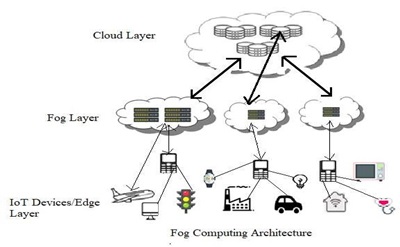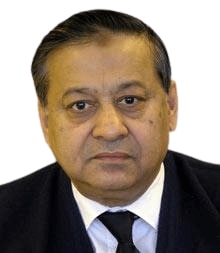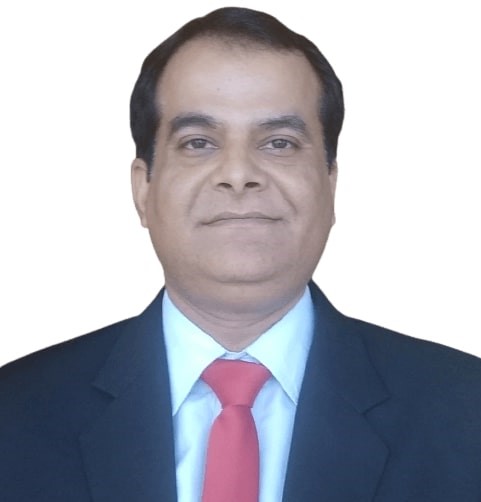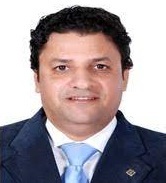A Proposal for Architectural Framework Using Internet of Things with Fog Computing for an Air Quality Monitoring System

DOI:
https://doi.org/10.54060/JIEEE/002.02.023Keywords:
Air Quality Monitoring, Significant Air Pollutants, Air Quality Index, Internet- of- Things, Cloud Computing, Air Quality ManagementAbstract
Air Monitoring becomes a systematic approach for sensitivity and finding out the cir-cumstances of the atmosphere. The major concern of air quality monitoring is to meas-ure the concentration of pollution and other important parameter related to the con-tamination and provides information in real-time to make decisions at right time to cure lives and save the environment. This paper proposes an Architectural Framework for the air quality monitoring system based on Internet-of-Things (IoT) and via Fog computing techniques with novel methods to obtain real-time and accurate measurements of con-ventional air quality monitoring. IoT-based real-time air pollution monitoring system is projected to at any location and stores the measured value of various pollutants over a web server with the Internet. It can facilitate the process and filter data near the end of the IoT nodes in a concurrent manner and improving the Latency issue with the quality of services.
Downloads
References
K. Okokpujie, E.N. Osaghae,O. Moduqe, et al., ”A smart air pollution monitoring system”. International Journal of Civil Engineering and Technology (IJCIET), vol.9, no.9, pp.799-809, Sep 2018.
R. Senthilkumar,P. Venkatakrishnan, N.Balaji, “Intelligent-based novel embedded system based IoT enabled air pollution monitoring system”, Microprocessors and Microsystems, vol.77, 2020.
S. Sirsikar, P. Karemore, “Review paper on air pollution monitoring system”, International journal of Advanced research in Computer and Communication Engineering, vol.4, no.1, pp.218-220, 2015.
P.D. Landge, R.R. Harne, “Air Quality Monitoring System for City: A Review”, Int. Res. J. Eng. Technol, vol.5, no.1, pp.521-522, 2018.
N.A. Jerry,”Cause and Effects of Pollutant Gases,”Available at: https://www.infoplease.com/math-science/ earth-environment /major-air- pollutants, july 2014.
“WORLD AIR QUALITY REPORT,”file:///C:/Users/lenovo/Downloads/world-air-quality-report-2021-en.pdf/ pp.1-43, July 2021
B. Deep, I. Mathur, and N. Joshi, “An approach toward more accurate forecasts of air pollution levels through fog computing and IoT,” in Information and Communication Technology for Sustainable Development, Singapore: Springer Singapore, vol.933, pp. 749–758, 2020.
J. Jo, B. Jo, J. Kim, et al., “Development of an IoT-based indoor air quality monitoring platform,” J. Sens., vol. 2020, pp. 1–14, 2020.
O. Uviase, & G. Kotonya, “IoT architectural framework: connection and integration framework for IoT systems”, arXiv preprint arXiv:1803.04780, 2018.
P. Srivastava,& R. Khan, “A review paper on cloud computing” International Journals of Advanced Research in Computer Science and Software Engineering, vol. 8, no.6, pp.17-20, 2018.
P.Y. Thomas, “Cloud computing”, The Electronic Library,vol.29,no.2, 2011.
A. Botta, W. D. Donato, V. Persico, et al., “Integration of Cloud computing and Internet of Things: A survey,” Future Gener. Comput. Syst., vol. 56, pp. 684–700, 2016.
H.F. Atlam, R.J. Walters, & G.B. Wills, ”Fog computing and the internet of things: a review”, big data and cognitive com puting, vol. 2, no.2, pp.10, 2018.
M. Guzel, S. Ozdemir, “A New CEP-based Air Quality Prediction Framework for Fog based IoT”, In International Symposium on Networks, Computers and Communications (ISNCC), pp. 1-6, 2019.
H. Gupta, A.V. Dastjerdi, S. K. Ghosh, et al., “iFogSim: A toolkit for modeling and simulation of resource management techniques in the Internet of Things, Edge and Fog computing environments: IFogSim: A toolkit for modeling and simulation of internet of things,” Softw. Pract. Exp., vol. 47, no. 9, pp. 1275–1296, 2017.
C. S. R. Prabhu, “Overview - fog computing and internet-of-things (IOT),” EAI endorsed trans. cloud syst., vol. 3, no. 10, pp. 154-378, 2017.
K.P. Saharan, A. Kumar, ”Fog in comparison to cloud: A survey”, International Journal of Computer Applications, vol.122, no.3,pp.10-12, 2015.
M. Ahmed, R. Mumtaz, S. M. H. Zaidi, et al., “Distributed fog computing for Internet of things (IoT) based ambient data processing and analysis,” Electronics (Basel), vol. 9, no. 11,2020.
Q. Liu, J.T. Harris,L.S. Chiu et al., “Spatiotemporal impacts of COVID-19 on air pollution in California, USA,” Sci. Total Environ., vol. 750, no. 141592, 2021.
S. Quarmby, G. Santos, and M. Mathias, “Air quality strategies and technologies: A rapid review of the international evidence,” Sustainability, vol. 11, no. 10, 2019.
B. Sivertsen and A. Bartonova, “Air quality management planning (AQMP),” Chem. Ind. Chem. Eng. Q., vol. 18, no. 4–2, pp. 667–674, 2012.
Notification, Coastal Regulation Zone. "Ministry of Environment & Forests." Government of India ,1991.
D. Ganeshkumar, V. Parimala, S. Santhosh kumar, et al., “Air and Sound Pollution Monitoring System using Cloud Computing”, International Journal of Engineering Research & Technology (IJERT), vol. 9, no.6, pp.81-85, 2020.
M. M. Ahmed, S. Banu, and B. Paul, "Real-time air quality monitoring system for Bangladesh's perspective based on Internet of Things," 3rd International Conference on Electrical Information and Communication Technology (EICT), pp. 1-5, 2017.
W. Y. Yi, K. M. Lo, T. Mak, et al., “A survey of Wireless Sensor Network based air pollution monitoring systems,” Sensors (Basel), vol. 15, no. 12, pp. 31392–31427, 2015.
H. Chen, S. Li, J. Zhang, et al.,“Indoor formaldehyde monitoring system based on fog computing”, In IOP Conference Series: Materials Science and Engineering, vol. 569, No. 4, 2019.
D. Ibaseta, J. Molleda, F. Díez, et al., “ An iot Platform For Indoor Air Quality Monitoring Using The Web Of Things”, Air Pollution Xxvii, vol.236, no.45,2019.
G. Manikannan, T. Vijayalakshmi, P. Prabakaran, “Mobile - Air Pollution Monitoring System using Internet of Things (IoT)”, International Journal of Scientific Development and Research (IJSDR), vol.11,no.4, pp:28-37,2019.
W. Wang, C. Feng, B. Zhang et al., "Environmental Monitoring Based on Fog Computing Paradigm and Internet of Things," in IEEE Access, vol. 7, pp. 127154-127165, 2019.
J. Santos, T. Wauters, B. Volckaert, et al., “Fog computing: Enabling the management and orchestration of smart city applications in 5G networks,” Entropy (Basel), vol. 20, no. 1, 2017.
M. S. Jamil, M. A. Jamil, A. Mazhar, et al., “Smart environment monitoring system by employing wireless sensor networks on vehicles for pollution free smart cities,” Procedia Eng., vol. 107, pp. 480–484, 2015.
P.L. Sun, J. Y. Weng, C.T. Yang, et al., "The Implementation of Air Pollution Monitoring Service Using Hybrid Database Converter," 7th International Conference on Cloud Computing and Big Data (CCBD), pp.269-274, 2016.
Y.Cheng, X.Li, Z.Li, et al., “AirCloud: a cloud-based air-quality monitoring system for everyone”. In Proceedings of the 12th ACM Conference on Embedded Network Sensor Systems pp. 251-265, 2014.
Z. Idrees, Z. Zou, L. Z. heng, “Edge computing based IoT architecture for low cost air pollution monitoring systems: A comprehensive system analysis, design considerations & development”, Sensors, vol.18, no.9,2018.
D. Saha, M. Shinde, S. Thadeshwar, “IoT based air quality monitoring system using wireless sensors deployed in public bus services” In Proceedings of the Second International Conference on Internet of things, Data and Cloud Computing, pp. 1-6, 2017.
M. Guzel, & S. Ozdemir, “A New CEP-based Air Quality Prediction Framework for Fog based IoT”, In International Symposium on Networks, Computers and Communications (ISNCC), pp. 1-6, 2019.
X. Lai, T. Yang, Z. Wang et al., “IoT implementation of Kalman Filter to improve accuracy of air quality monitoring and prediction,” Appl. Sci. (Basel), vol. 9, no. 9, 2019.
S. Devarakonda, P. Sevusu, H. Liu, et al., “ Real-time air quality monitoring through mobile sensing in metropolitan areas”, In Proceedings of the 2nd ACM SIGKDD international workshop on urban computing , pp. 1-8, 2013.



























